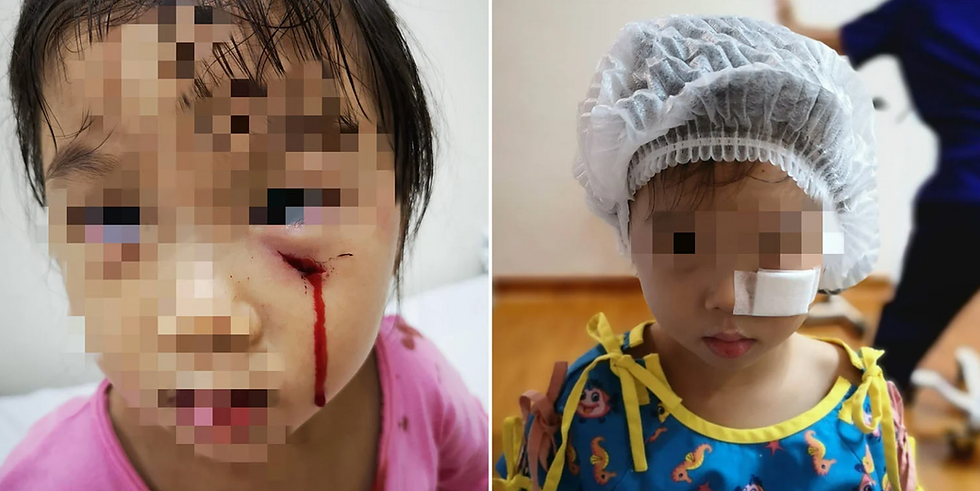The event occurred after the child and her brother were taken to Haus Park Playground by their father.
The small girl stopped at a house on Tavistock Avenue to look at a pet peacock while they were going home.

Her mother stated that it was common for children to stand outdoors and see the peacock and other fowl kept as pets.

The gate, on the other hand, was wide open that day, allowing the peacock to charge and attack the girl.
Despite her father's best efforts to protect her, she had already sustained several wounds and it was too late.
Additionally, the girl’s father was scratched all over his arms and scraped his hands and legs. He had to get a tetanus shot to prevent getting an infection.
"Image By GuideYourPet" https://guideyourpet.com/peacock-symbolism/

As the girl’s injuries were rather severe, she was immediately rushed to the hospital, and her dress was also bloodied due to her injuries. Unfortunately, she had to be placed under general anaesthesia for the doctors to clean the wound on her face and stitch it up.
The mother quoted Singapore’s Wild Animals and Birds Act that the peacock should’ve been kept within a bird-proof cage or enclosure. According to NParks, the public is allowed to keep no more than 10 non-commercial poultry as pets at home. Peacocks are one of the permitted species.
Such pets, on the other hand, must be maintained in a bird-proof cage, home, or enclosure with fine wire mesh netting.


This prevents the pet from coming into touch with other animals outside of the cage, home, or enclosure.
"Image By GuideYourPet" https://guideyourpet.com/peacock-symbolism/
Furthermore, every bird, poultry, or animal should have a good roof capable of preventing droppings, excrement, feathers, and other particles from entering the cage, home, or enclosure.
Failure to follow the Animals and Birds (Prevention of Avian Disease in Non-Commercial Poultry) Rules can result in a fine of up to $10,000 or a 12-month jail sentence, or both.
What to do when you are attacked by birds?
Be ready for a bird attack
· To intimidate predators, many species of birds will hover and clack their beaks before attacking. If you observe this behaviour, be ready for a bird attack.
· Ducks and geese are notorious for going after people. They can approach noisily, heads high. When attacking, they will lower their heads, hiss and charge, and can tear exposed flesh with their sharp beaks.
· Do not carry food. Birds habituated to human contact, including seagulls and crows, will swoop down and bite at foods and the fingers that hold them, particularly if the person is gesticulating with the food.
Close your eyes and cover your ears.
· A bird will swoop down quickly, striking at the victim’s head, face or shoulders using its wings, break and claws.
· Protect vital parts of the facial area by closing your eyes and covering your ears.
Run for cover away from nesting and foraging areas.
· Run as fast as you can onto the green and away from the area.
· Many species will attack if their nests or foraging areas are disturbed. If a bird attacks, it will continue to attack until you leave these areas. Continue to cover your ears while running.
First Aid
· After making sure the casualty is safe from harm, wash the wound thoroughly with soap and water in order to minimize infection.
· Pat dry with clean gauze and cover with a wound dressing.
· If the wound is deep, control bleeding by applying pressure.
· Arrange to send the victim to the hospital.
Find out more about basic bandaging technique

The 100% eLearning Basic First Aid Course covers the essential skill of First Aid that everyone should know and be able to do such as a variety yet simple bandaging.
Included is an introduction to CPR+AED with instructions of use and application. Delivered in a simple, practical format, it covers the management of common everyday first aid situations such as heart attack, choking and bleeding according to the Singapore Resuscitation and First Aid Council guidelines.
To find out more about Basic First Aid,
Do contact us at
Tel: 62978123
WhatsApp: 86715681
